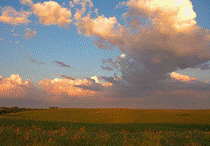
Proceedings of the North American Prairie Conferences
Date of this Version
1989
Document Type
Article
Abstract
The effect of spring burning, fertilization, and atrazine on herbage yield of warm- and cool-season grasses, flowering stalk density, and seed yield of selected warm-season grasses was determined on a remnant prairie and a restored prairie located near Lincoln and Center, Nebraska, respectively. Sites were burned in mid-April 1987 and followed by application of fertilizer (112 kg N/ha at the remnant prairie and 112-22 kg N-P/ha at the restored prairie) and atrazine (2.2 kg active ingredient/ha). Herbage yield of warm-season grasses increased more than 100% following burning in combination with fertilization at both sites and atrazine application alone at the restored prairie. Warm-season grass flowering stalk density increased more than 3 and 2 times following burning combined with fertilization and fertilization only at the remnant and restored prairies, respectively. Germinable seed numbers increased over 600% following a combination of burning, fertilization, and atrazine application at the remnant prairie and more than doubled following atrazine application at the restored prairie. Evidence provided by this research indicates that spring burning, fertilization, and atrazine can be used to renovate and improve productivity of tallgrass prairie in Nebraska.


Comments
Published in Prairie Pioneers: Ecology, History and Culture: Proceedings of the Eleventh North American Prairie Conference, August 7-11, 1988, Lincoln, Nebraska (Lincoln, NE 1989).